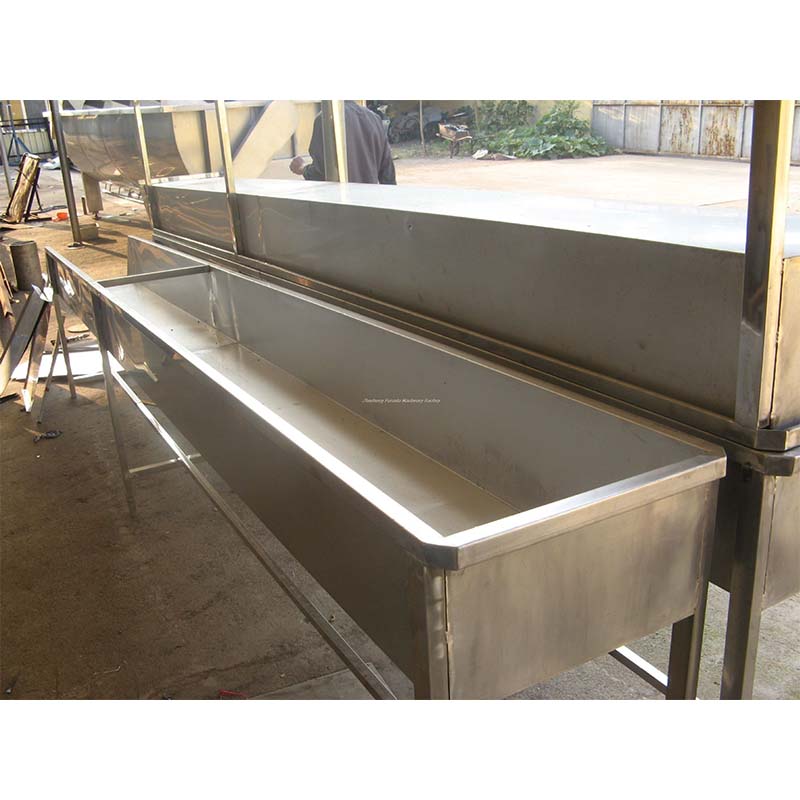Feed Blender for Livestock Nutrition Optimization and Efficient Mixing Solutions
Dec . 04, 2024 03:30 Back to list
Feed Blender for Livestock Nutrition Optimization and Efficient Mixing Solutions
The Importance of Feed Mixers in Modern Agriculture
In the world of modern agriculture, efficiency and productivity are paramount. Farmers are constantly seeking innovative ways to optimize their processes, and one of the critical components that play a pivotal role in this optimization is the feed mixer. A feed mixer is an essential equipment used in the livestock industry to combine different types of feeds—grains, silage, minerals, vitamins, and other nutrients—into a homogeneous mixture conducive to animal health and growth.
The Role of Feed Mixers
The primary function of a feed mixer is to ensure that the feed is uniformly mixed to provide balanced nutrition for livestock. Proper nutrition is essential for the growth, reproduction, and overall health of animals, whether they are cattle, pigs, poultry, or sheep. With a well-mixed feed, producers can significantly enhance feed efficiency, which translates to better weight gain and lower feed costs.
Moreover, the use of a feed mixer can help farmers tailor diets to the specific needs of their livestock. For instance, different stages of an animal's life—such as weaning, growth, and lactation—require different nutritional profiles. Farmers can adjust the ingredients accordingly to meet these needs, ensuring optimal performance.
Types of Feed Mixers
There are several types of feed mixers available on the market today, catering to different needs and operational scales. The most common types include vertical mixers and horizontal mixers
1. Vertical Mixers These mixers utilize a vertical auger to lift and mix the ingredients. They are particularly effective for combining wet and dry materials and are known for their thorough mixing capabilities. Vertical mixers are ideal for smaller farms or operations that require a precise mix of ingredients.
2. Horizontal Mixers Horizontal mixers perform mixing through the use of horizontal augers. They are better suited for larger operations, as they can handle more substantial quantities of feed at once. These mixers are often used in commercial feed mills where high-volume production is necessary.
3. Batch vs. Continuous Mixers Batch mixers process a specific amount of feed in one cycle, while continuous mixers operate continuously without interruption. The choice between the two depends on the scale of production and specific operational needs.
feed mixer

Benefits of Using a Feed Mixer
Investing in a feed mixer offers numerous benefits to farmers. Firstly, it promotes better feed quality, which is crucial for maintaining healthy livestock. Even distribution of feed components ensures that each animal receives the right amount of nutrients, reducing the risk of deficiencies or imbalances.
Secondly, feed mixers save time and labor costs. With advanced mixing technology, farmers can produce larger batches of feed in a fraction of the time it would take to mix by hand. This efficiency allows farm operators to focus on other critical areas of their operations, such as animal health and farm management.
Additionally, feed mixers contribute to reducing waste. By ensuring that all ingredients are thoroughly mixed, farmers can prevent the segregation of feed components, which often leads to wasted nutrients. This optimization not only saves money but also promotes sustainable farming practices.
Future of Feed Mixing Technology
As technology continues to advance, the feed mixer industry is witnessing significant innovations. Modern feed mixers are increasingly equipped with automation and precision farming technologies. For instance, some mixers now integrate with software that can scientifically calculate the ideal feed formulations based on real-time animal performance data.
Furthermore, the rise of additive technologies, such as liquid flavors and supplements, is changing the way feed is formulated and mixed. The industry is also seeing the emergence of mobile mixers, allowing farmers to create feed on-site and minimize transportation costs.
Conclusion
In conclusion, feed mixers are a cornerstone of modern livestock production, enhancing efficiency, reducing costs, and promoting animal welfare. As the agriculture sector continues to evolve, embracing technology and innovative practices will be essential to meet the growing global demand for animal protein. By investing in quality feed mixing systems, farmers can ensure they are well-equipped to thrive in this competitive landscape. Ultimately, effective feed mixing not only benefits individual farm operations but also contributes to the overall sustainability and productivity of global agriculture.
-
Hot Sale 24 & 18 Door Rabbit Cages - Premium Breeding Solutions
NewsJul.25,2025
-
Automatic Feeding Line System Pan Feeder Nipple Drinker - Anping County Yize Metal Products Co., Ltd.
NewsJul.21,2025
-
Automatic Feeding Line System Pan Feeder Nipple Drinker - Anping County Yize Metal Products Co., Ltd.
NewsJul.21,2025
-
Automatic Feeding Line System - Anping Yize | Precision & Nipple
NewsJul.21,2025
-
Automatic Feeding Line System - Anping Yize | Precision & Nipple
NewsJul.21,2025
-
Automatic Feeding Line System-Anping County Yize Metal Products Co., Ltd.|Efficient Feed Distribution&Customized Animal Farming Solutions
NewsJul.21,2025






